Some of the links in this post may be affiliate links.
More and more indoor gardeners are experimenting with growing plants in water, versus in pots of soil. There are some definite pros and cons to growing in water, but the process is really quite simple! And there is no guesswork involved with knowing when you need to water your soil, since there isn’t any! Keep reading to learn all the important steps of how to grow Spider Plant in water.
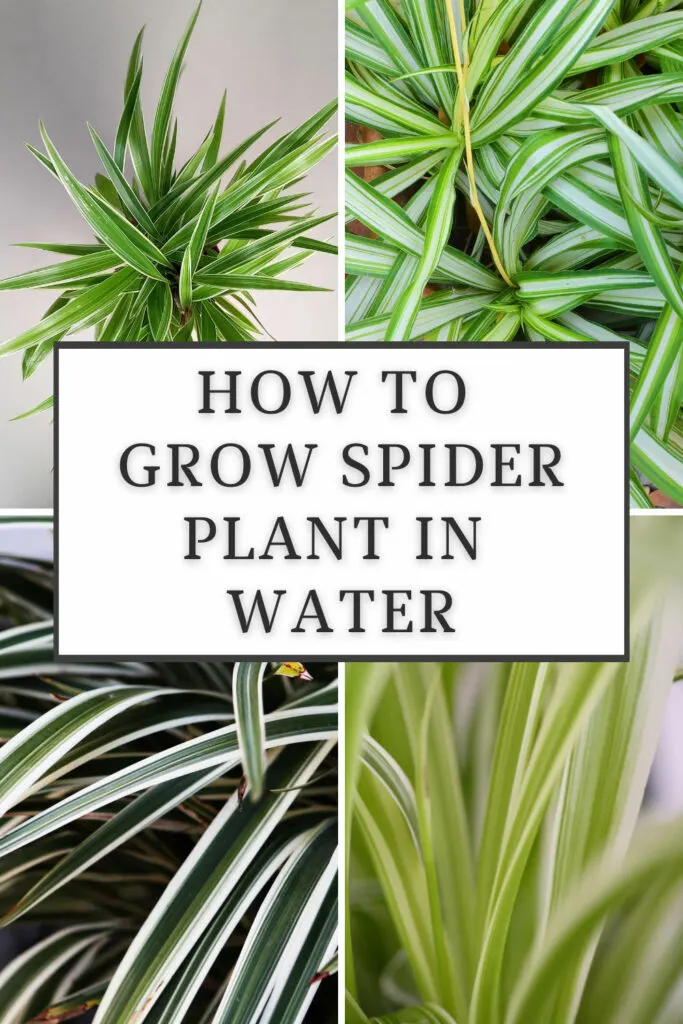
One of the easiest indoor plants to grow, Chlorophytum comosum, commonly known as spider plant, ribbon plant or airplane plant, can easily be grown in water.
I’m not talking about spider plant propagation in water (which is easy as well). I’m talking about permanently growing the spider plant in water.
There are a few important tips to know to get started so that you can have long-term success with hydroponic growing.
In order to be successful with growing spider plants in water, you’ll have the most success if you can do the following:
- Start off with baby spider plants
- Choose a growing vessel and add a plant
- Place the plant in good light
- Add a nutrient solution
- Change the nutrient solution weekly
Let’s look at each of these in more detail.
Table of Contents
HOW TO GROW SPIDER PLANT IN WATER
Spider plant care couldn’t be any easier by growing them permanently in water. Here are the main steps that you can follow.
1. START OFF WITH BABY SPIDER PLANTS
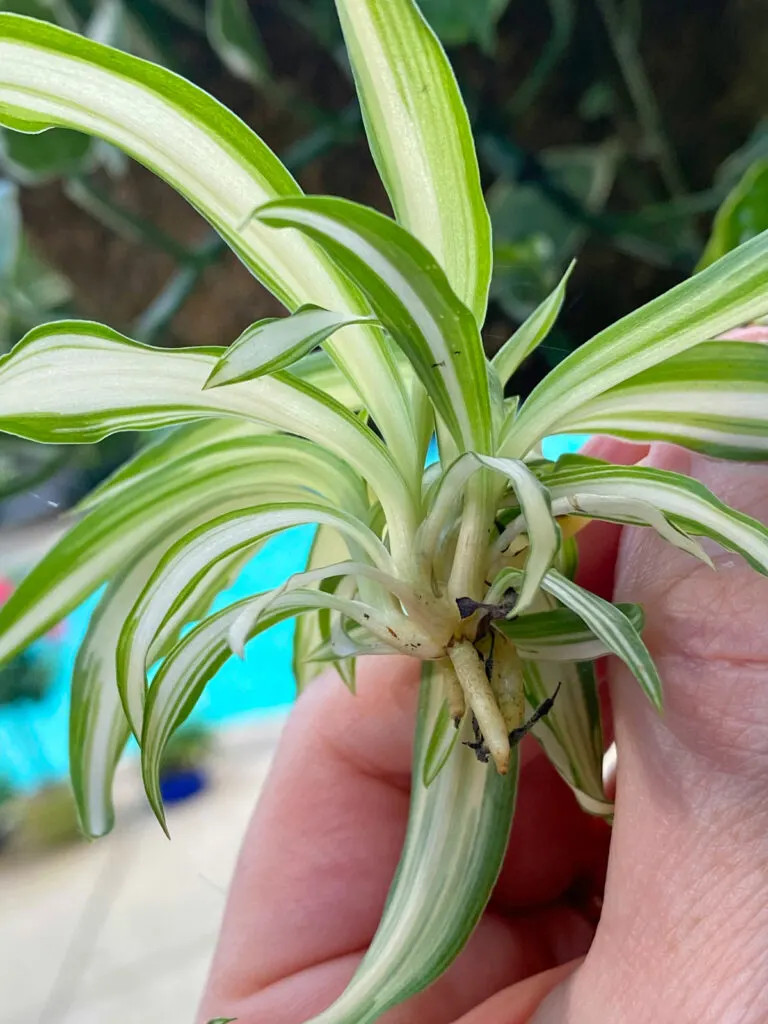
While you can really do this at any time of year, it is best to start the process right as the growing season is getting started or during the growing seasons (spring to summer).
Instead of starting off with a mature plant, the easiest way to grow a spider plant in water is to start off with baby plants.
You can potentially start off with a potted plant, wash off all the potting mix from the root ball, and place it in water, but this will cause a great deal of stress on the plant. So if you have any mature spider plants growing in soil, leave them growing in its pot of soil.
My best advice is to use a sterilized sharp knife or set of pruners to cut off the spider plant babies from the parent plant and use these to start new plants. That way, the new spider plants will start off getting used to growing in water from the start. It will grow its own roots in no time.
The little babies will start to grow roots and leaves in no time. These are really some of the easiest houseplants that you can grow.
Depending on how big your growing vessel is, you can put one plantlet or more.
Simply cut a small plant off the long stems (called a stolon) coming off of the mother plant, and you’re good to go.
2. CHOOSE A GROWING VESSEL AND ADD A PLANT
You can choose either a clear glass vessel or one that is opaque. Clear glass containers are nice because you can see the plant’s roots. You may get more algae growth with a clear container, but you’ll be changing the water anyway.
You can always start with a glass of water and then as your spider plantlets grow, you can easily lift them out and place them in a larger container.
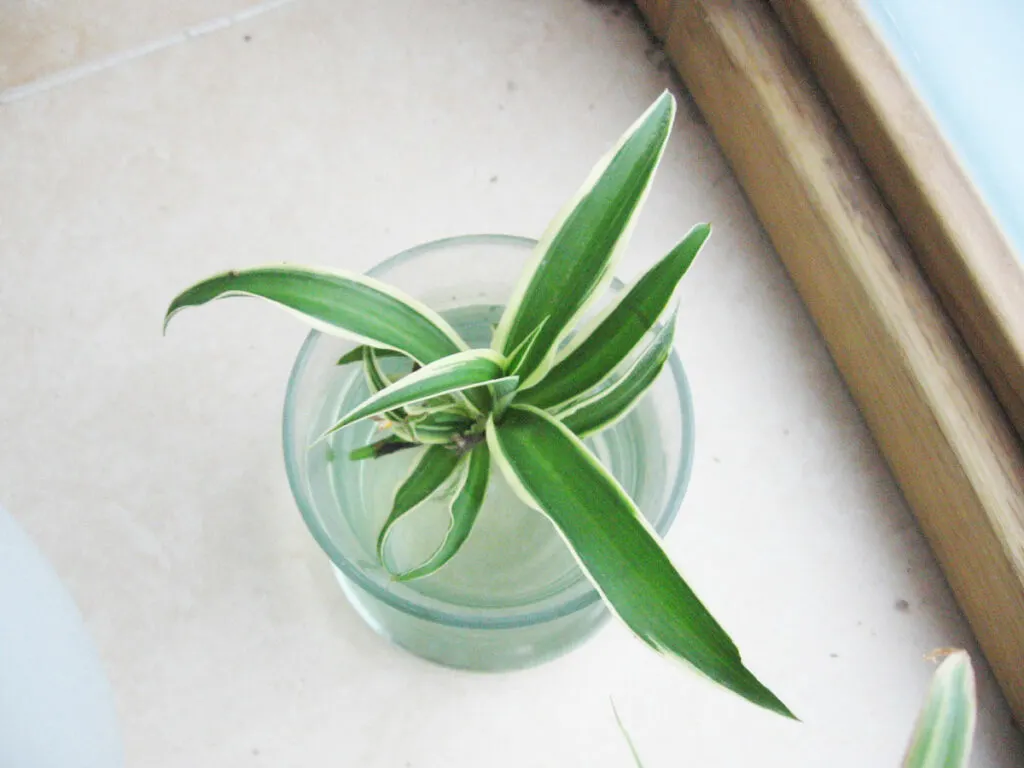
Place your plantlets in the container and add enough water so that the water level sits at the bottom of the spiderette. Root growth typically occurs pretty quickly. Often times within days.
Monitor the water level carefully so that your plantlet isn’t even left high and dry. Regular tap water will work just fine. Just make sure that you monitor the water level, especially while roots are just starting to grow.
Spider plants are sensitive to fluoride in tap water and this causes some brown tips, but other than that, tap water is perfectly fine. You can always trim the brown tips off.
If you use a water softening system for your tap water, most of these use sodium which is toxic to plants. If you have this type of system, you can always use distilled water or filtered water.
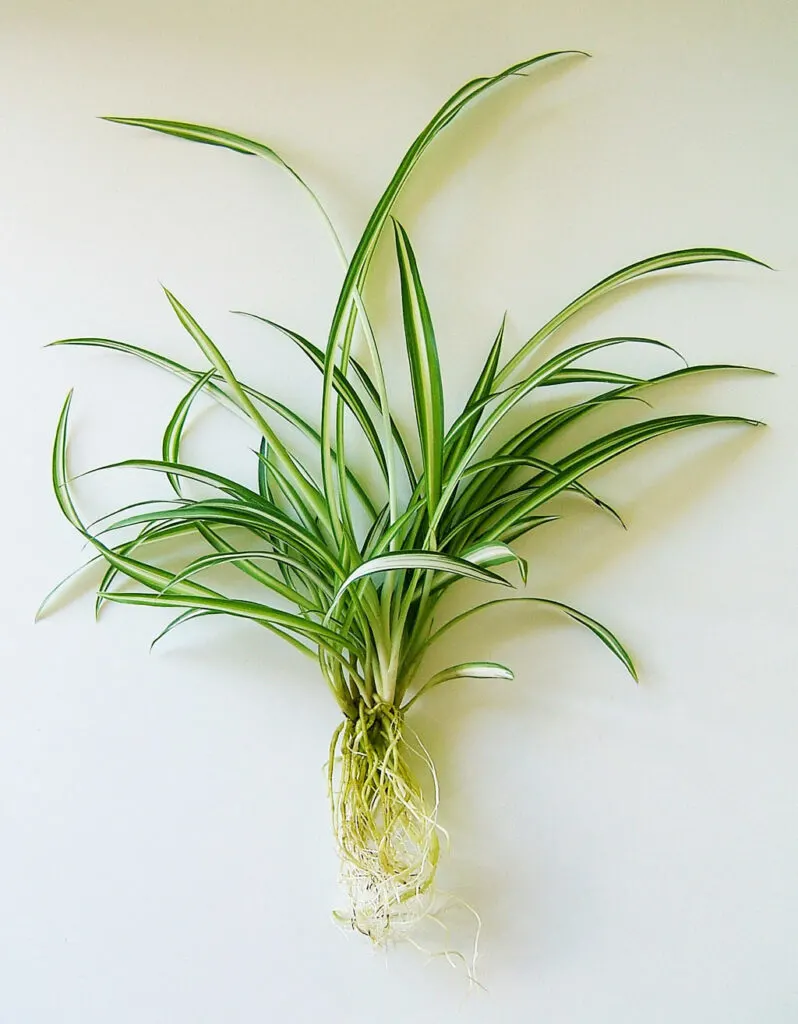
3. PLACE THE PLANT IN GOOD LIGHT
Next, place your container with your new plants directly in front of a window that has bright indirect light.
Even better would be a window that has some direct sun, such as morning sun from an eastern-facing window, or afternoon sun from a western-facing window.
4. ADD A NUTRIENT SOLUTION
Once your baby spider plants have started to grow new roots, it is time to start adding a nutrient solution.
For long-term success of growing your spider plant in water, this is the most important aspect that you need to implement.
And it’s important to use a good fertilizer, so here are some tips that I recommend.
Avoid any fertilizers that use urea as these can burn your plant’s roots.
I highly recommend a fertilizer called Dyna-Gro Grow (link to Amazon). It is an amazing, nutritionally complete fertilizer. It contains all 6 essential macronutrients and all 10 micronutrients that plants need for healthy growth.
You will never have to worry about nutrient deficiencies with this fertilizer, and it is urea-free so it won’t burn your spider plant roots.
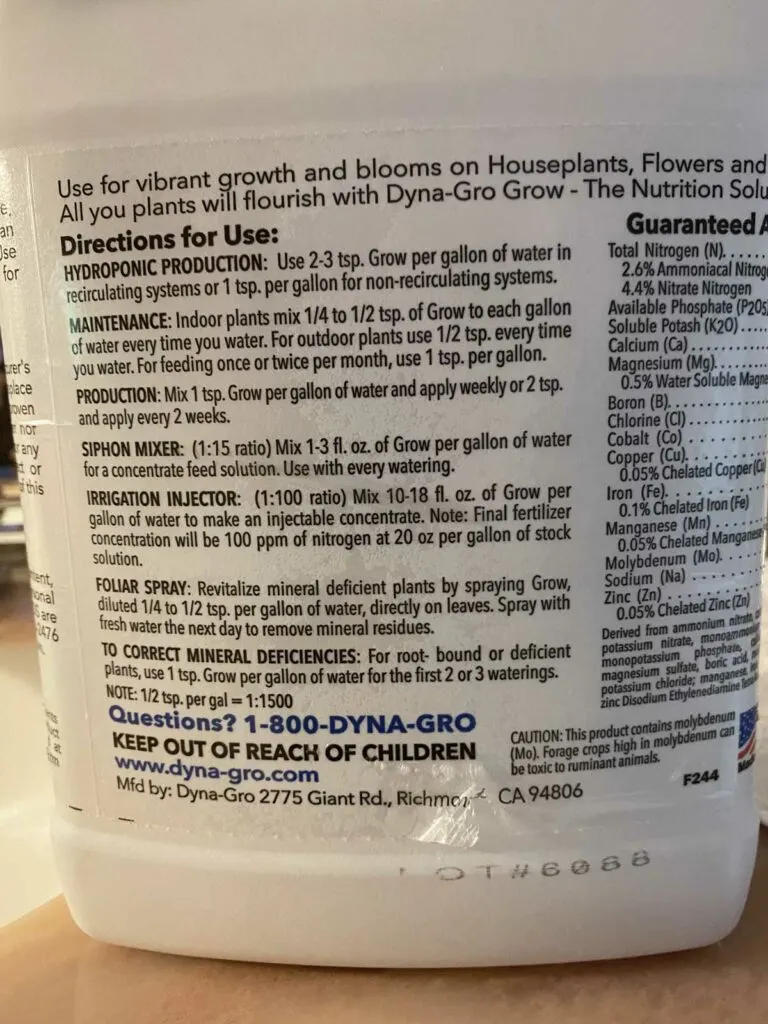
The beautiful part of Dyna-Gro Grow is that you can use it for all your plants, regardless of whether you grow hydroponically or in soil. The label gives you information on the proper concentration to use for each application.
For hydroponic growing in non-recirculating systems (which is what you’d use), simply add 1-2 teaspoons of the fertilizer per gallon of water.
5. CHANGE THE NUTRIENT SOLUTION WEEKLY
Last but not least, you’ll want to completely change the nutrient solution weekly if you can. Dump out the solution and replace with freshly made nutrient solution. Why?
First off, the fresh water will replenish oxygen to your spider plant’s root system. And secondly, adding more Dyna-Gro Grow will replace nutrients that your plant has used up and will result in more luxuriant growth.
It will also give you an opportunity to remove any dead leaves that may be making the water cloudy and stagnant.
While you can grow any plant in plant water, it will do much better if you keep it growing with a good fertilizer solution.
PROS AND CONS TO GROWING SPIDER PLANTS IN WATER
PROS
- You’ll never have to wonder when you need to water your potting mix because there isn’t any!
- Since there are no drainage holes, there is no mess to make with water spilling on your floors and over your furniture.
- You can be more creative with the types of vessels that you can use since you don’t need drainage holes.
- Root rot will be a thing of the past.
CONS
- You’ll have to regularly replenish the fertilizer solution.
- You’ll probably get some algae growth in the water, so you’ll have to periodically clean out the container as well as wash any algae off of the spider plant roots.
If you love spider plants, don’t forget to check out my blog post on why spider plants get brown leaf tips, as well as my blog post on 5 different ways to propagate spider plants.
I hope you’ve enjoyed this post on how to grow spider plant in water. Have you tried it yet? Comment below. I’d love to hear!

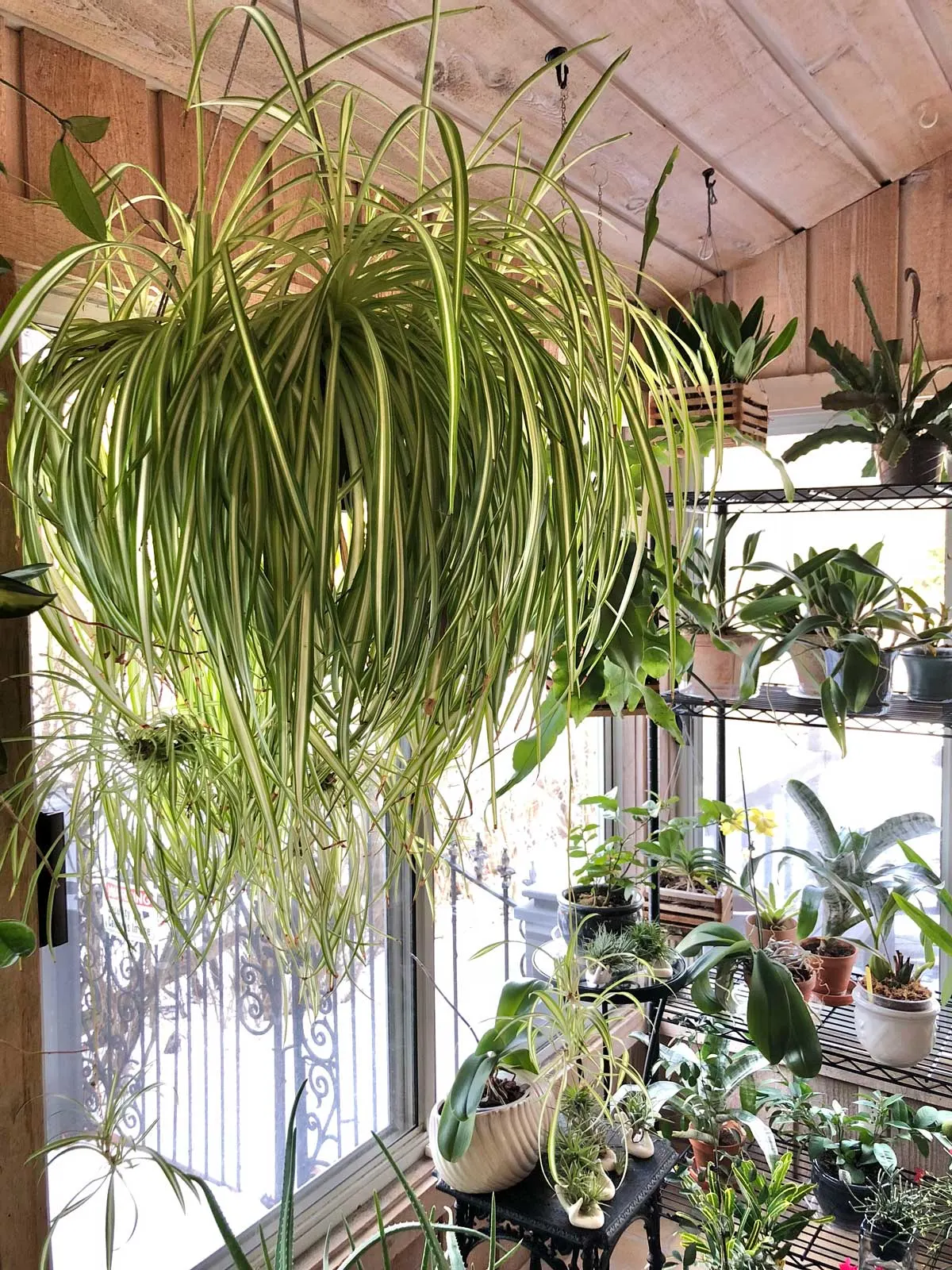
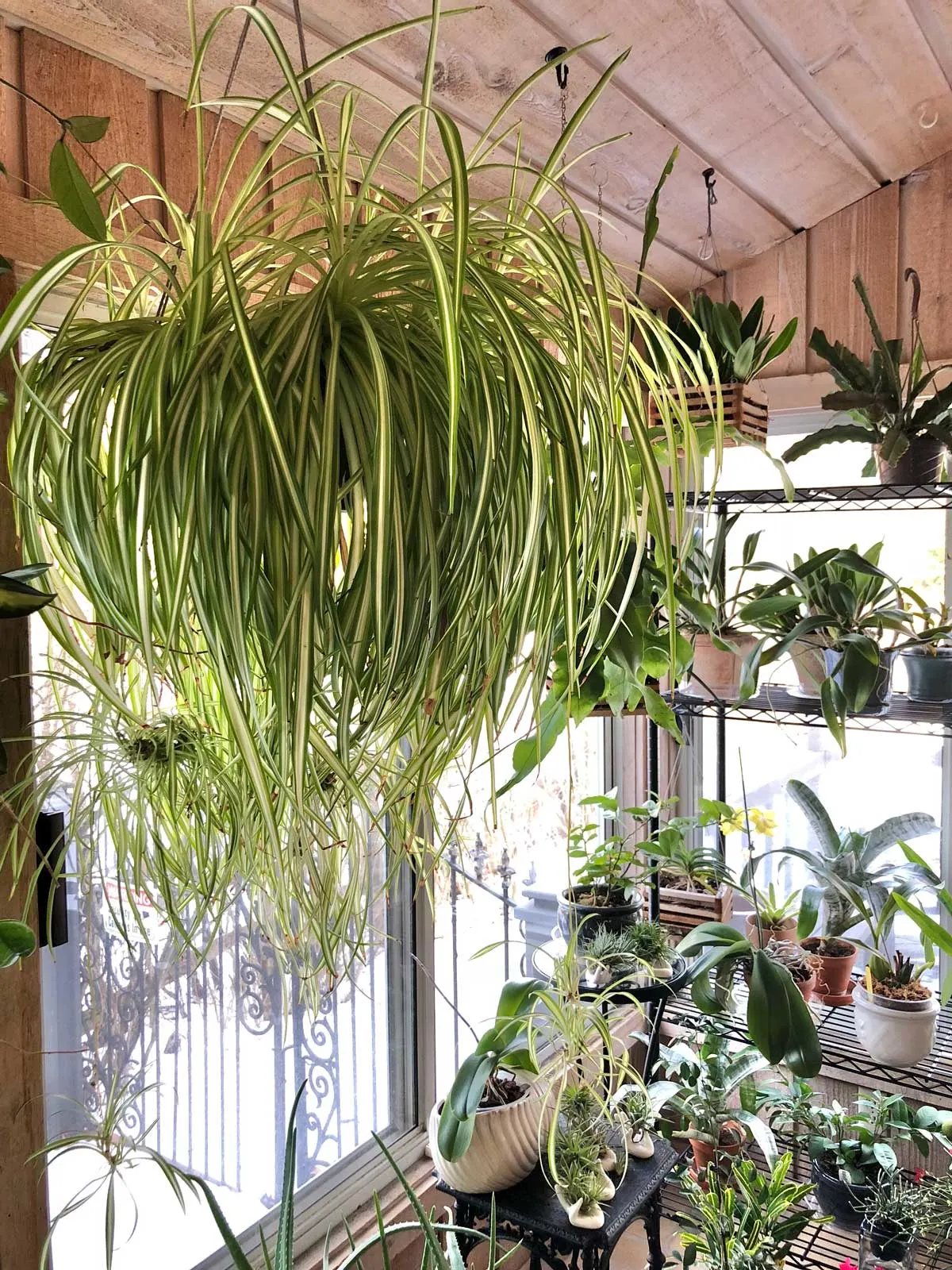
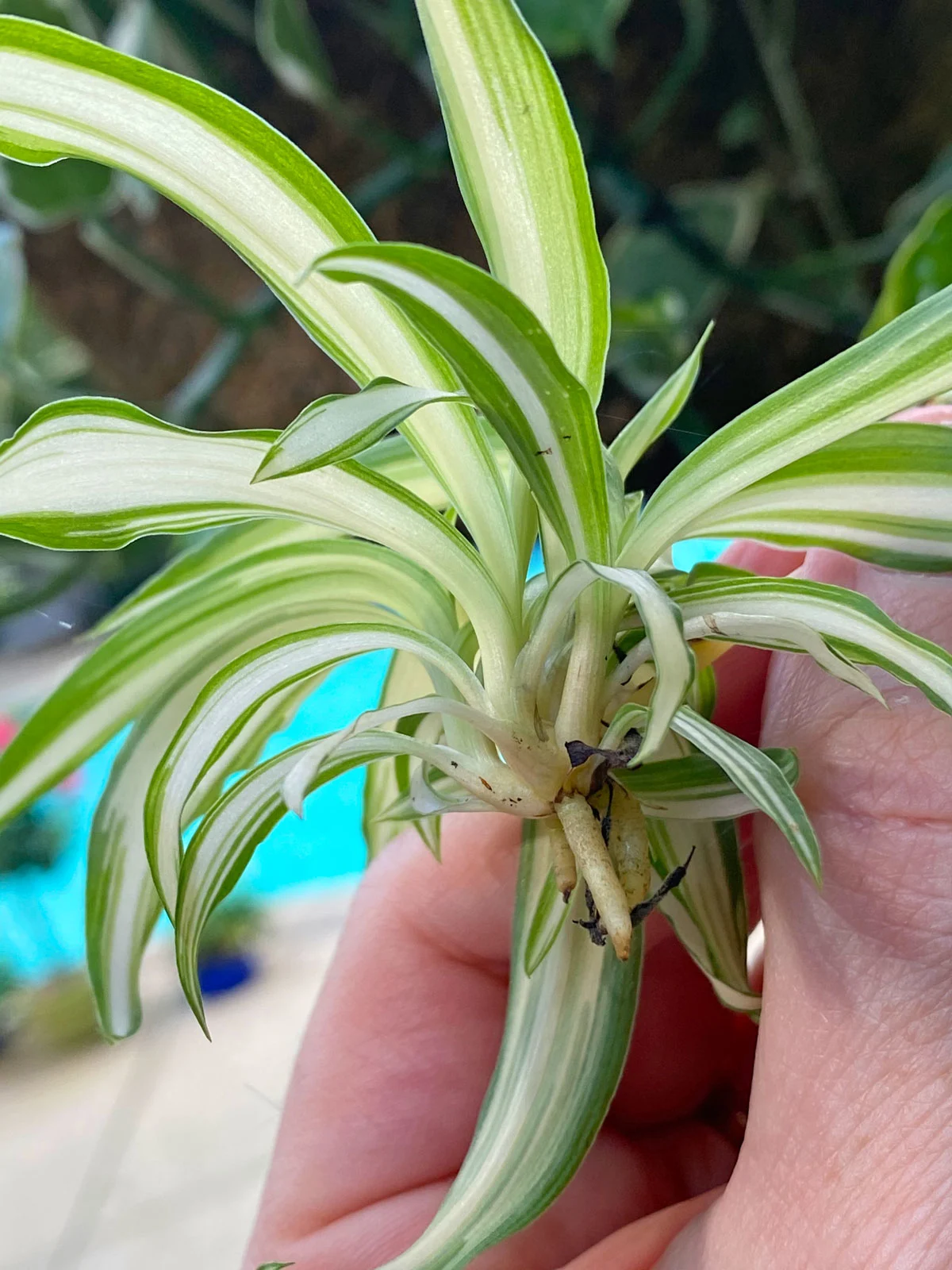
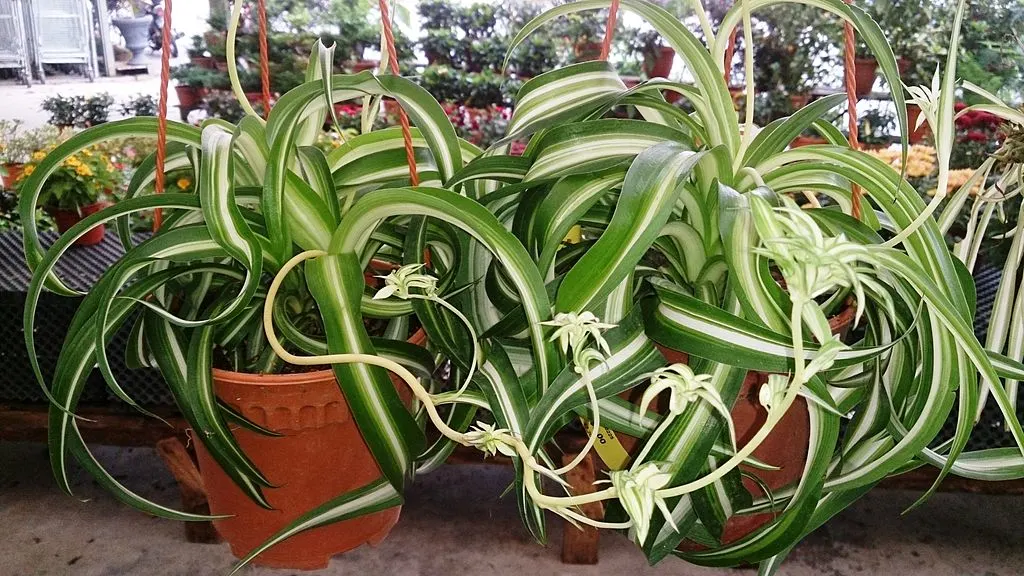
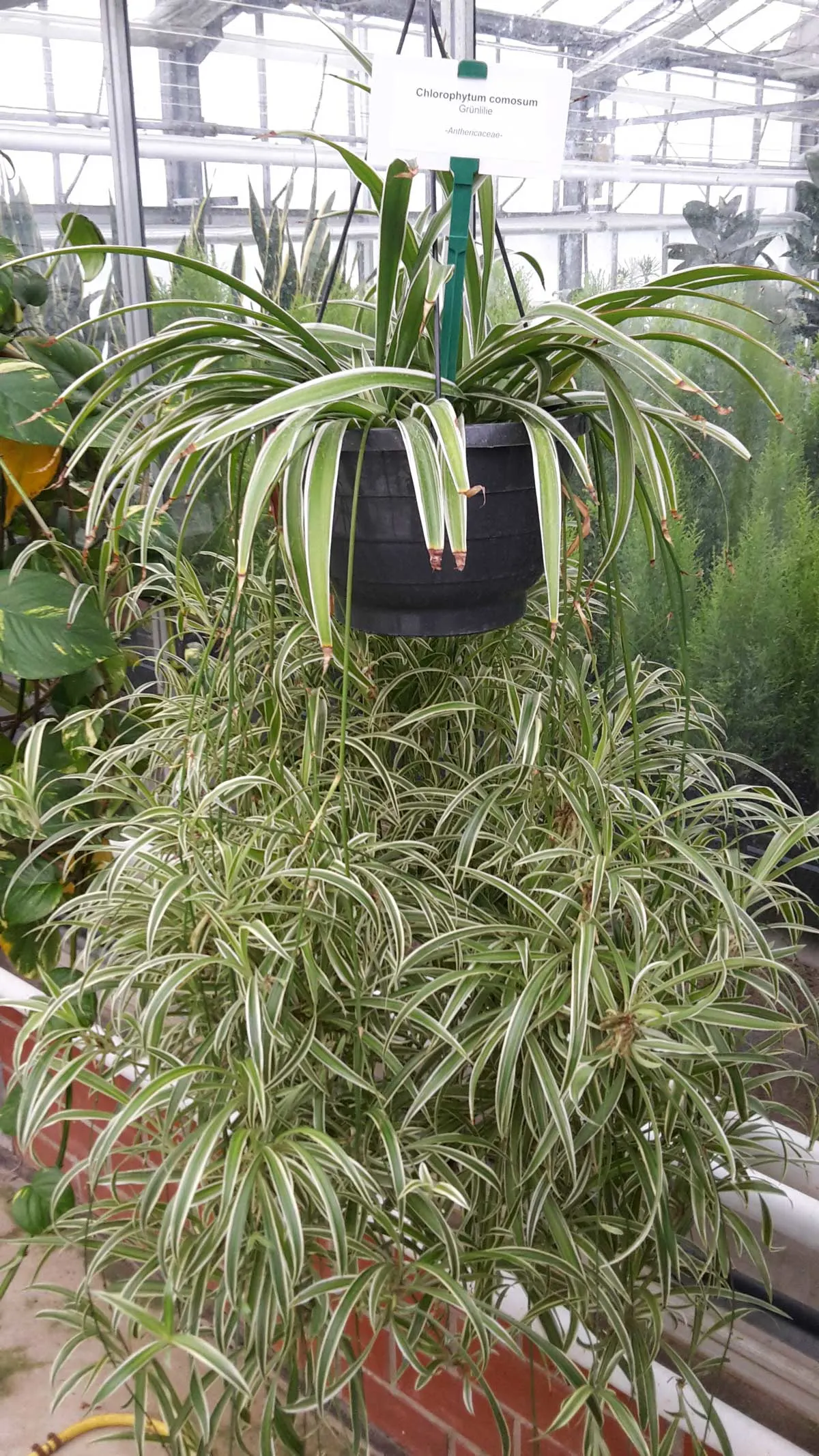
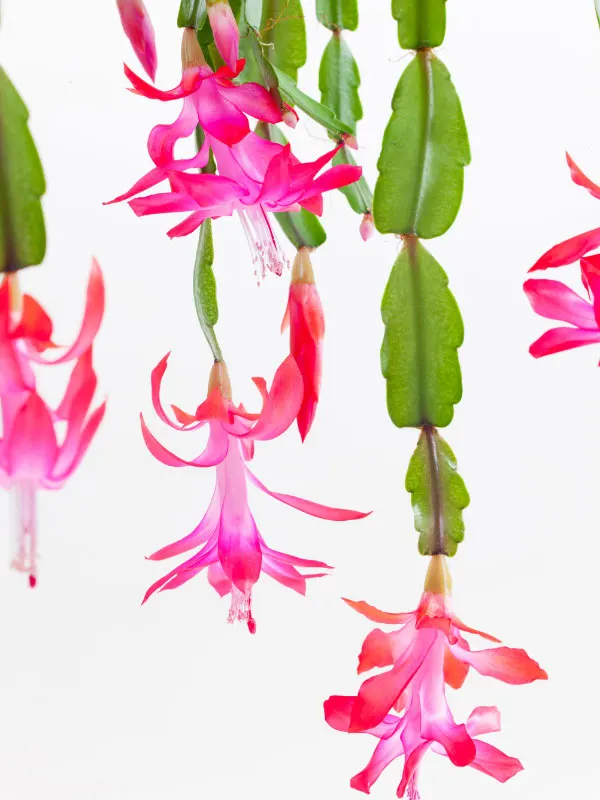
Rose
Wednesday 4th of June 2025
Many of my spider plants leaves tend to bend and fold at about 1/4 length from the base. I can’t understand why it’s happening, had to cut them. They don’t have brown tips, so I guess it’s not overwatered. Kindly advise. Thanks.
Raffaele Di Lallo
Wednesday 4th of June 2025
It may not be getting enough light perhaps, or it is weakened by not enough water. Can you describe your growing location (how far from a window exactly, and what exposure), and your watering routine?
Janice Page Reed
Friday 29th of September 2023
I was growing spiders in water (from babies) for approximately a year and they were doing great then suddenly they started to die. The roots were just coming off as I was rinsing them. I grew them in rain water. These babies were descendants of a plant my son brought home from school in the fourth grade and he’s now 44 years old. So disappointed I lost them. Any thoughts on why this happened?
Raffaele
Friday 29th of September 2023
Sorry to hear that Janice! If the growing conditions did not change, I'm wondering if it was the water. Were you changing the water frequently? If the water had gone stagnant (dead leaves, etc) for a while, it could have caused this. Water should be changed fairly frequently in order to both replenish oxygen as well as remove any stagnant, rotting material. How often were you changing the water?
Sara Marks
Thursday 3rd of August 2023
Thank you so much for the incrediblely helpful article. I found it very informative & easy to read and understand.
Raffaele
Friday 4th of August 2023
Glad you enjoyed it Sara! :-)
Maggie
Sunday 23rd of April 2023
Good afternoon.i have been trying to buy Dana grow from Amazon for weeks but it's been out of stock. Do you know of any where else in the UK I can buy it from please??
Raffaele
Monday 24th of April 2023
I would check multiple sellers on Amazon, or check back later if they're still out of stock. I'm not sure of where else you can purchase it in the UK.
Adeline
Saturday 15th of April 2023
I am growing all my spider plants in water, about 12 babies & 1 big one. I will start to use Dyna Gro thanks